by Mike Carter & Robert Hines
For any entity, building a data center in the U.S. is a mission- critical endeavor. From articulating the business drivers behind forging such an asset to defining the key elements of an appropriate site, it is necessary to create a detailed picture upfront of the crucial and complex requirements to successfully execute on your vision for a data center. Of these decisions, none is more important than where to locate the data center you plan to build.
To forge a data center, your company must consider and evaluate a multitude of variables, from uncovering desirable physical characteristics and avoiding potential hazards to locating in an environment that is conducive to business growth and development. Considering whether you want an environmentally controlled facility that is highly secure but also low profile and possibly “hidden” in a remote locale is just one of many factors considered by data center developers when choosing a site. By fully assessing a potential property for its advantages and disadvantages, you can determine which factors are most important to your business and move ahead with confidence.
Data center site location experts across the U.S. have identified at least six site selection criteria key to any data center project:
Data centers are estimated to consume 3-4 percent of the world’s electricity, requiring robust electricity usage to power similarly robust processing and computing needs. At the very least, a viable site must have power redundancy, excellent power quality and scalable power. Data centers and the businesses they power cannot afford to experience business disruptions that would come with outages or power spikes, so scoring low on any of these factors should immediately eliminate a site from your consideration.
Sites that have higher-than-normal risk factors add to the potential cost of construction to mitigate risks. Sites potentially impacted by flooding, seismic events, hurricanes, tornadoes, and a host of other natural and man-made risk factors require higher construction costs to offset these risks. These factors can be managed, however, if a company is educated. Every site has advantages and tradeoffs, but modern construction capabilities mean that you can accommodate many of them. For example, a site located in a tornado zone might feature a “hardened” exterior especially resistant to natural or physical threats like wind speeds. If you research, understand and prepare for risk, your company will be well prepared to meet it.
Since data centers are capital-intensive construction projects, geographic locations that have unduly high costs associated with weather, materials, labor and transportation will likely be less attractive to you compared to sites that do not. In the end, measuring all risks against the upside of a locale is important.
Some factors are not possible to mitigate. Like electricity, the presence of redundant telecommunications infrastructure is not negotiable for a data center. Sites that do not possess adequate telecommunication infrastructure including the presence of multiple carriers should be eliminated from the selection process — there are too many good choices available in the U.S. to deal with this type of challenge.
Since data center servers generate significant heat, temperate climates are sought because of their ability to offer significant cooling capacity. Environments that require greater mechanical cooling are less desirable because of the costs associated with keeping cooling equipment running. Temperate climates allow data center developers to use economizers that greatly reduce cooling costs and increase the operational return on investment (ROI) of your center.
Companies that handle U.S. federal government data are held to more stringent IT infrastructure standards, established with the Federal Information Security Management Act (FISMA). The National Institute of Standards and Technology (NIST) provides technical and operational details that can help fulfill the FISMA directive. This often impacts decisions like facility location, levels of data security, data access, frequency of monitoring and reporting.
Although data centers often require few personnel, the ones you need matter. Data centers require highly educated and skilled professionals to run them; attracting these professionals may depend on the quality of life offered by the area where your center is located. It might not (and likely should not) rise to the level of importance in site selection as some of the other key factors outlined here, but warrants consideration in evaluating the overall ROI of your site selection.
Retrofit vs. Purpose-Built
In some instances, companies must also decide whether to retrofit an existing data center site or build it from the ground up. In spite of the complexity of data center site selection and the fact that retrofitting an existing building for data center use is less costly and takes less time than building new, several reasons support the idea behind purpose-built data centers (PBDC) built on vacant land. First, PBDCs are built to higher structural standards, making them better equipped to tolerate extreme environmental conditions such as earthquakes, tornadoes and other natural disasters or weather-related phenomena. Next, the internal design of a PBDC is more customer-centric because it allows for the efficient placement of high-density equipment and easy navigation around the facility while also making it possible to include additional amenities for workers.
Additionally, a data center that is built from the ground up will typically have fewer points of access, which automatically strengthens the security of the building compared to a retrofit facility. A PBDC also makes it easier to build in multiple levels of redundancy. Thanks to its robust infrastructure, a PBDC is built to easily handle the
new electrical and cooling demands of modern IT infrastructure, and it is well equipped for any future expansion plans that may occur. When combined with a viable, strategic location, a PBDC provides confidence that you will experience fewer service interruptions and that they will be easier to alleviate should they occur.
Data Center Modeling
A smart approach when considering how your data center will function as expected is to render a model to illustrate exactly that. You can actually determine a site’s capacity to accommodate a prototypical data center using sophisticated modeling of the building site. Inputs such as assumed building spatial characteristics, power density (watts per square foot) levels, cabinet power load, placement of mission critical equipment (inside versus outside) and expected IT load populate and drive the model. Outputs include the essential mechanical load required to support the IT load and the raised floor (white space) yield. By using different input variables, the model can calculate the parameters for a “sweet spot” data center design.
For example, one case model might assume a high system redundancy (tier level) so you can determine the highest white space yield for the lowest power input. In another case, you might want to determine the maximum amount of white space at moderate power densities and moderate redundancy levels, such as for a co-location data center. Regardless of the situation, data center modeling is a sophisticated and useful tool for determining a site’s capacity.
Local Government and Utility Company Support
Large data centers usually bring with them revenues, skilled jobs and power usage that makes them attractive to both government entities and utilities. As a result, businesses may qualify for and/or be entitled to tax and sustainability incentives. Strong utility service is integral to the operation of your data center site. Beginning with the requirement for more power, utilities can significantly impact the data center site selection decision. New trends indicate that data centers require more power than ever before, perhaps as much as 200W to 300W per square foot, and data center efficiency is often calculated based on cost per watt of electricity consumed. To make the right site selection, you need to know the available transmission infrastructure to bring power to the site and whether your prospective utility company is willing to upgrade when necessary. In recent years, some utility companies have begun partnering with businesses to bring data centers to fruition. Seeking the business benefit of having your data center located within their service area, the more sophisticated utilities might provide services including researching data center sites and market demographics, making introductions to local economic development experts, providing infrastructure details, advising you of tax credit and incentive opportunities, offering turnkey engineering, construction, procurement and maintenance and even assisting with site visits. As with any business venture, key business and government partnerships often increase efficiencies, reduce costs and streamline approvals.
Identifying the Best Data Center Sites
Although there are many complexities associated with assessing potential data center locations, it’s still possible to identify sites that offer a unique combination of desirable data center characteristics. Often an urban location offers good access to an existing power grid, but may or may not provide a reliable and available power supply. A data center located in a rural site, usually purpose-built, is often co-developed with utility providers to ensure robust connectivity and power supply, but may be removed from a cultural center. In making its recommendations, Questline cites the findings of two independent companies who were commissioned to conduct extensive site evaluations for data center suitability.
Biggins Lacy Shapiro & Company (BLS) is a nationally recognized site location consulting firm that was established in 2006 (after separating from the Princeton- based unit of the Stadtmauer Bailkin law firm) to focus on providing location economics services and is known for its work on numerous major data center projects for Fortune 500 companies.
To evaluate these sites, BLS worked with its energy advisory affiliate, Sugarloaf Associates, experts in the provision of comprehensive energy services and procurement strategies (e.g., utility relocation, energy procurement, renewable energy installations, infrastructure assessments and mission critical facilities). The team performs due diligence on utility-approved sites to assure suitability for data center development using an approach designed to uncover any strengths and weaknesses that could play a significant role in data center site development. For this project, BLS partnered with an engineering and site evaluation services provider that consults on mission critical projects.
BLS and Sugarloaf Associates assessed overall market conditions in an extensive 11-state territory and conducted a preliminary review of 25 sites. Location inspections were then conducted on 14 of the sites, and ten of those sites emerged with a BLS seal of approval. Rigorous on-site reviews uncovered each site’s ability to support a major data center, including key components like electricity infrastructure, access to fiber, low risk of natural disasters and man-made hazards, availability of incentives, state tax policy and potential for free cooling.
Site Prospectus
BLS developed a detailed site prospectus for each of the ten data center site locations (identified by AEP Economic & Business Development), making it possible to assess each location using a wide range of important metrics. The effort to generate each prospectus required, on average, travel to each site, as well as engineering, layout, design, research, writing and editing, communicating with team members and follow-up with local contacts. It is estimated that each prospectus required between 100 to 150 man hours to complete (Each prospectus is available in its entirety at aepdatacenters.com).
Selected: ten optimal Data Center Sites
From its findings, the BLS team identified ten sites based on their ability to meet the criteria for successful data center development. Each has the infrastructure necessary to support data center projects. This includes a reliable electric transmission and distribution system for a cost-effective and reliable energy supply, as well as multiple communication service providers that offer reliable conductivity and latency through their fiber network. Companies will know what power and data lines exist on and around the property and whether more than one substation or power grid can feed into the potential data center, which would provide an extra layer of redundancy. Perhaps to a lesser extent but still of great importance, companies should ensure that an adequate water supply exists for HVAC system operations.
Next, a secure environment is necessary to minimize risk. The majority of these sites are located in non-urban areas where the risk is low for activity that might interfere with data center operations. This not only includes natural disasters, such as earthquakes, floods and hurricanes, but also neighboring hazardous locations, such as airports, oil and/or natural gas pipelines and freight rail lines. These sites all have favorable seismic ratings that range from
0.00 to 0.57, especially when compared to the national average of 1.8.
It should be noted that man-made risks can pose a threat. A thorough analysis of these sites has determined a low level of risk for this type of interference because, generally speaking, they are located away from large population areas, coastal areas or centers of government.
Other important features of a worthy data center site include easy accessibility and features that will accommodate future growth and expansion. Site access is important, especially when building on a vacant lot. Property that is located near a major highway is attractive
for bringing in building materials. And when multiple roads access a site, this alleviates any concerns over possible man-made or natural disasters unexpectedly blocking access. If an emergency occurs, it’s imperative that emergency service vehicles can reach the site with expedience — like an IT infrastructure, you need to avoid a single point of failure. That said, increased site access is a double-edged sword since greater physical access means greater challenge to achieving high physical security levels.
As mentioned earlier, recent trends point to the fact that a location’s ability to attract top IT talent to work at the facility is of growing importance. As many companies co- locate their facilities, bringing IT staff, vendors and servers together makes road access and public transportation key factors in success.
Perhaps one of the most financially rewarding characteristics of a potential data center site is an ability to reduce operational costs through free cooling. A cooler, less humid climate makes it possible for data centers to use outside air for cooling purposes. This reduces electrical costs and minimizes the wear and tear on cooling systems. Fortunately, the sites identified are located in a temperate climate, making them ideal for free cooling opportunities.
Sensitivity to physical resources at a potential site is crucial. Some sites may be experiencing electricity or water shortages. Others may be sensitive to urban sprawl and would not want a business to attract citizens to the outskirts of the city limits. City services, such as trash, fire protection and sewage, may already be stretched to the limits.
It is important to integrate local, state and national government regulations, as well as building and zoning requirements. At every level across the country, ordinances vary wildly and can govern even the smallest detail of how a company builds and maintains a data center.
Targeted incentives should not be overlooked as a way to help offset costs. Economic development incentives that reward companies for capital expenditures can be enormously beneficial. This could include everything from sales tax exemptions and energy rebates to property tax abatements.
Site Selection:
Midwest Data Centers Determined to be Optimal
 Bradley Square | Mt. Hope, West Virginia
Bradley Square | Mt. Hope, West Virginia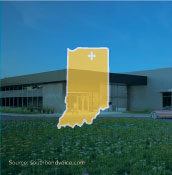 Ignition Park | South Bend, Indiana
Ignition Park | South Bend, Indiana Industria Centre Site #17 | Muncie, Indiana
Industria Centre Site #17 | Muncie, Indiana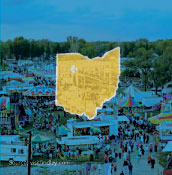 Findlay Commerce Park | Findlay, Ohio
Findlay Commerce Park | Findlay, Ohio Wolpert Greenfield Site | Hilliard, Ohio
Wolpert Greenfield Site | Hilliard, Ohio Cherokee Expressway Industrial Park Site #10 | Tulsa, Oklahoma
Cherokee Expressway Industrial Park Site #10 | Tulsa, Oklahoma The 59 industrial Park Site | Victoria, Texas
The 59 industrial Park Site | Victoria, Texas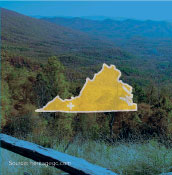 Progress Park | Wytheville, Virginia
Progress Park | Wytheville, Virginia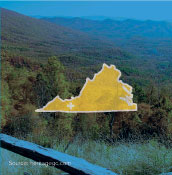 Roanoke County Center for Research & technology | Roanoke, Virginia
Roanoke County Center for Research & technology | Roanoke, Virginia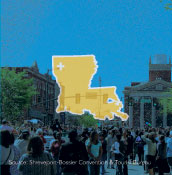 National Cyber Research Park | Bossier City, Louisiana
National Cyber Research Park | Bossier City, LouisianaFor more information on these properties, please refer to aepdatacenters.com
Mike Carter is the Senior Engineer at Questline, Inc.. He can be reached at [email protected].
Robert Hines is the COO at Questline, Inc.. He can be reached at [email protected].
BECOME A MEMBER or LOGIN for Full Access to Member Content and Information.